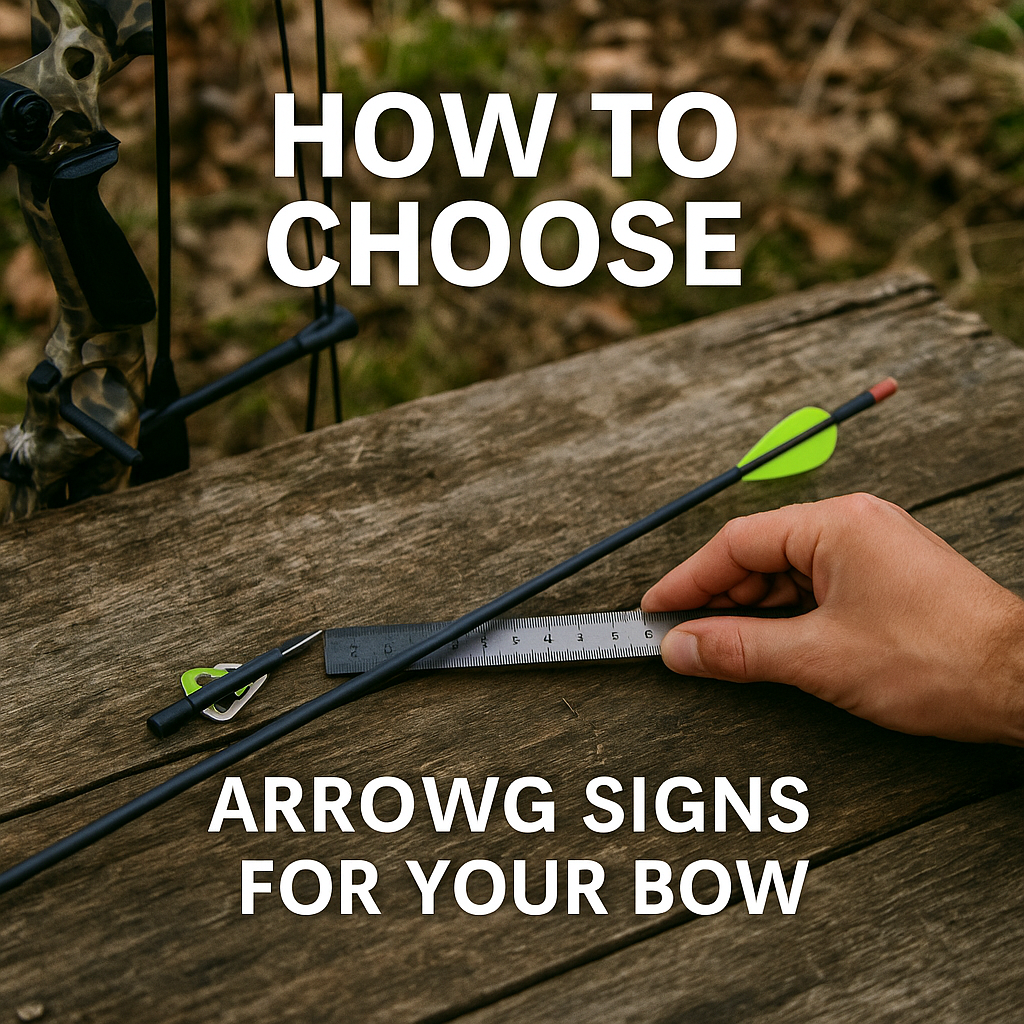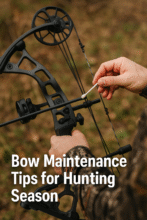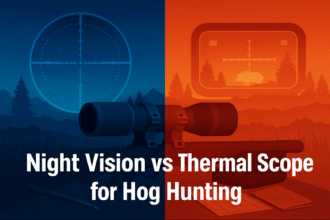How to Choose Arrow Spine for Your Bow: The Complete Guide

If you’re into archery whether bowhunting, 3D shooting, or target practice you’ve probably heard the term “arrow spine” tossed around. But what exactly does it mean, and why does it matter so much? Choosing the correct arrow spine for your bow is one of the most critical steps in ensuring accuracy, safety, and consistent shooting performance.
In this comprehensive guide, we’ll break down what arrow spine is, why it matters, and how to select the right spine for your setup. By the end, you’ll know exactly how to match your arrows to your bow so you can shoot with confidence and precision.
Table of Contents
- What is Arrow Spine?
- Why Arrow Spine Matters
- Factors That Influence Arrow Spine
- How to Read Arrow Spine Charts
- Step-by-Step: Choosing the Right Arrow Spine
- Common Mistakes to Avoid
- Arrow Spine and Bowhunting
- Arrow Spine for Target Archery
- FAQs About Arrow Spine
- Pro Tips for Perfect Arrow Spine
- Advanced: Dynamic Spine Calculations
- Conclusion
What is Arrow Spine?
The term arrow spine refers to how much an arrow shaft flexes when force is applied—specifically when the bowstring pushes it forward upon release. Simply put, it’s the measure of an arrow’s stiffness.
There are two main types of arrow spine:
- Static Spine: The stiffness rating of the arrow shaft when weight is placed on it in a controlled test (usually with 1.94 lbs at the center of a 28-inch shaft).
- Dynamic Spine: How the arrow flexes in real-world shooting conditions, influenced by draw weight, arrow length, tip weight, and release style.
Understanding both is key, but dynamic spine often makes the biggest difference for your bow setup.
Why Arrow Spine Matters
Selecting the wrong spine can lead to poor accuracy and unsafe shooting. Here’s why it matters:
- Accuracy: If your arrow is too weak (under-spined), it will flex excessively, veering off target. If it’s too stiff (over-spined), it won’t flex enough and will fly inconsistently.
- Safety: Using an arrow that’s too weak for your bow can cause the shaft to splinter or break under stress.
- Consistency: Correct spine ensures your arrows react the same way shot after shot.
Whether you’re bowhunting a whitetail or shooting targets at the range, spine selection is non-negotiable for performance.
Factors That Influence Arrow Spine
Choosing the right arrow spine isn’t just about grabbing arrows off the shelf. Several variables affect how much your arrow flexes:
1. Draw Weight of Your Bow
Heavier draw weights require stiffer arrows because they exert more force on the shaft.
- Example: A 70-pound compound bow needs a much stiffer spine than a 40-pound recurve.
2. Arrow Length
The longer the arrow shaft, the weaker the spine behaves. Even a stiff arrow can act weak if cut too long.
- Tip: Always consider your draw length when cutting arrows.
3. Point Weight (Field Tip or Broadhead)
Heavier tips make the arrow flex more on release.
- Example: A 125-grain broadhead weakens spine compared to a 100-grain tip.
4. Bow Type (Compound vs. Recurve vs. Longbow)
- Compound bows release arrows with higher energy, usually requiring stiffer shafts.
- Traditional bows (recurves, longbows) are more forgiving but still need proper matching.
5. Release Style
- Finger release flexes arrows differently than mechanical releases.
- Finger shooters may require slightly weaker spines due to increased oscillation.
How to Read Arrow Spine Charts
Manufacturers provide spine charts to help archers select arrows. These charts typically cross-reference:
- Draw weight of your bow
- Arrow length
- Point weight
The intersection shows the recommended arrow spine number (e.g., 340, 400, 500).
Common Arrow Spine Ratings
- 250 spine: Very stiff; suited for heavy draw weights (70–80 lbs).
- 340 spine: For mid-heavy setups (~60–70 lbs).
- 400 spine: Moderate; great for 50–60 lbs draw weights.
- 500 spine: For lighter setups (~40–50 lbs).
- 600+ spine: For very light draw weights, youth, or beginners.
Step-by-Step: Choosing the Right Arrow Spine
Here’s a process to follow:
Step 1: Know Your Bow Specs
Record your bow’s draw weight, draw length, and type (compound, recurve, etc.).
Step 2: Decide Arrow Length
Generally, arrows should be 1–2 inches longer than your draw length for safety.
Step 3: Select Point Weight
Decide whether you’re using 100-grain field tips, 125-grain broadheads, or heavier hunting tips.
Step 4: Use a Spine Chart
Plug your data into a manufacturer’s chart (Easton, Gold Tip, Carbon Express, etc.).
Step 5: Test & Tune
Paper tuning and bare-shaft testing help fine-tune your choice. Sometimes, even the “recommended” spine needs slight adjustments.
Common Mistakes to Avoid
- Using arrows that are too weak → Can lead to dangerous breakage.
- Ignoring arrow length → Cutting arrows too long or too short affects flex.
- Overlooking tip weight → Heavy broadheads may require a stiffer shaft.
- Blindly trusting charts → Charts are guidelines; tuning is essential.
- Mixing spines → Always shoot arrows of the same spine for consistency.
Arrow Spine and Bowhunting
For bowhunters, arrow spine is especially critical.
- Broadheads magnify tuning issues: An arrow with poor spine will plane or drift badly with broadheads.
- Penetration depends on arrow flight: Correct spine ensures energy transfer and deep penetration.
- Quiet shooting: Properly spined arrows reduce bow noise, which is crucial when hunting wary game.
Arrow Spine for Target Archery
Target shooters benefit from spine tuning because:
- Even tiny inconsistencies affect grouping at long distances.
- Competitive archers often “micro-tune” arrow spine to achieve perfect arrow flight.
- Indoor vs. outdoor target setups may require different arrow configurations.
FAQs About Arrow Spine
1. What happens if I shoot arrows with the wrong spine?
- Too weak: Arrows fishtail, impact inconsistently, and risk breaking.
- Too stiff: Arrows may fly high or to the side, reducing accuracy.
2. Can I use one spine for different bows?
Not recommended. Each bow has unique draw weight and setup—always match arrows to the specific bow.
3. Do heavier arrows need stiffer spines?
Not necessarily. Spine refers to stiffness, not weight. However, heavier tips weaken the effective spine.
4. Is a stiffer spine always safer?
Yes, but overly stiff arrows reduce accuracy. Balance is key.
5. How do I test if my arrows are correctly spined?
- Paper tuning: Shoot through paper and analyze tear patterns.
- Bare-shaft testing: Compare flight of bare vs. fletched shafts.
Pro Tips for Perfect Arrow Spine
- Use an archery shop spine tester for precision.
- Always cut arrows from the front (point end), not the nock end.
- Keep a consistent arrow build (same length, tip, fletching, spine).
- Upgrade gradually: as your draw weight increases, adjust arrow spine accordingly.
Advanced: Dynamic Spine Calculations
For advanced archers, dynamic spine calculators (software or apps) consider:
- Arrow length
- Shaft diameter
- Insert/outsert weight
- Broadhead/fletching weight
- Bow type & cam aggressiveness
This helps fine-tune beyond manufacturer charts, especially for custom hunting setups.
Conclusion
Choosing the right arrow spine for your bow is one of the most important steps to becoming a consistent and accurate archer. From draw weight and arrow length to tip weight and bow type, multiple factors play into the decision. By understanding the basics, using spine charts, and fine-tuning through testing, you’ll ensure your arrows fly true every time.
Whether you’re aiming for a bullseye in competition or a clean ethical shot in the woods, getting your arrow spine right will make all the difference.






